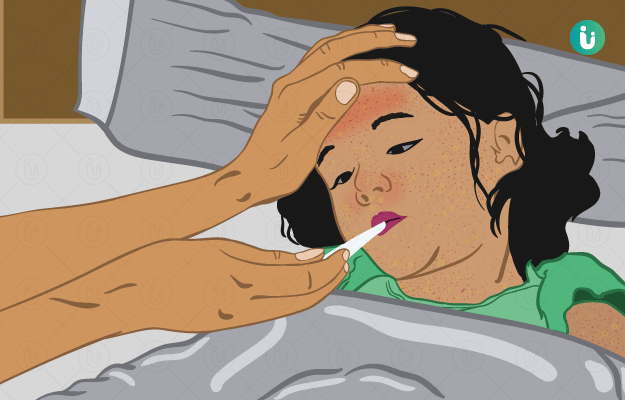What is scarlet fever?
Scarlet fever is an infection caused by bacteria called streptococci. An infected person takes 2-5 days to develop symptoms of the condition. It is a type of communicable disease found commonly in children and begins with a sore throat. However, adults may be the prime carriers of the bacteria. Fever, vomiting, chills and abdominal pain are other symptoms of the condition, while children may develop a whitish coating on the tongue. Overall, the bacterium may cause tonsillitis, skin infection and acute rheumatic fever.
What are its main signs and symptoms?
Signs and symptoms of the condition are:
- Sore throat
- Fever
- Swollen red tonsils
- Swollen or strawberry (red and bumpy) tongue
- Nausea
- Vomiting
- Loss of appetite
- A fine red rash, like a sunburn all over the body giving the disease the name- scarlet fever
In extreme cases, the condition may give rise to complications like:
- Pus pockets around tonsils
- Swollen lymph nodes
- Skin or ear infection
- Rheumatic fever
- Pneumonia
- Joint inflammation or arthritis
What are the main causes?
The infection gets transmitted by:
- Breathing droplets containing the bacteria from a cough or sneeze of infected people
- Direct contact with an infected person
- Contact with contaminated surfaces and then touching the mouth or nose
- Sharing personal items like towels, clothing or food
How is it diagnosed and treated?
A strep test is done to diagnose the condition by swabbing the throat and examining the swab under a microscope. Further, a throat culture swab can be undertaken by the doctors to confirm the existence of scarlet fever. This is important for children and teens since they are at risk of developing a rheumatic fever from untreated scarlet fever.
Treatment of the condition involves antibiotic therapy using penicillin or amoxicillin. The regimen should be adopted to last 20 days, although many recover by the fifth day itself. Fever and pain medications may be advised. Home remedies include gargling with salt water, drinking adequate fluids and having comfort foods like warm soups.

 Doctors for Scarlet Fever
Doctors for Scarlet Fever 

















